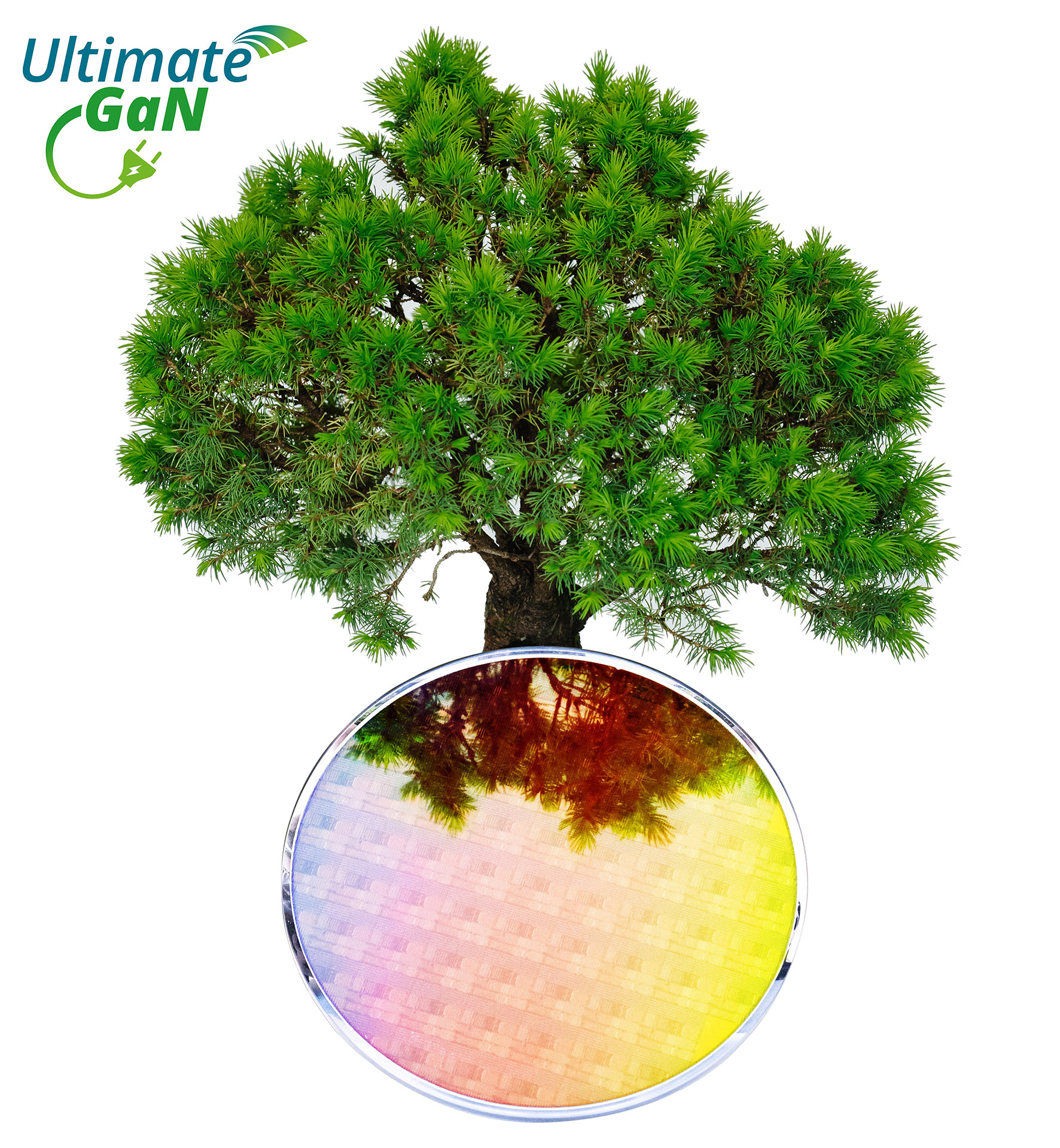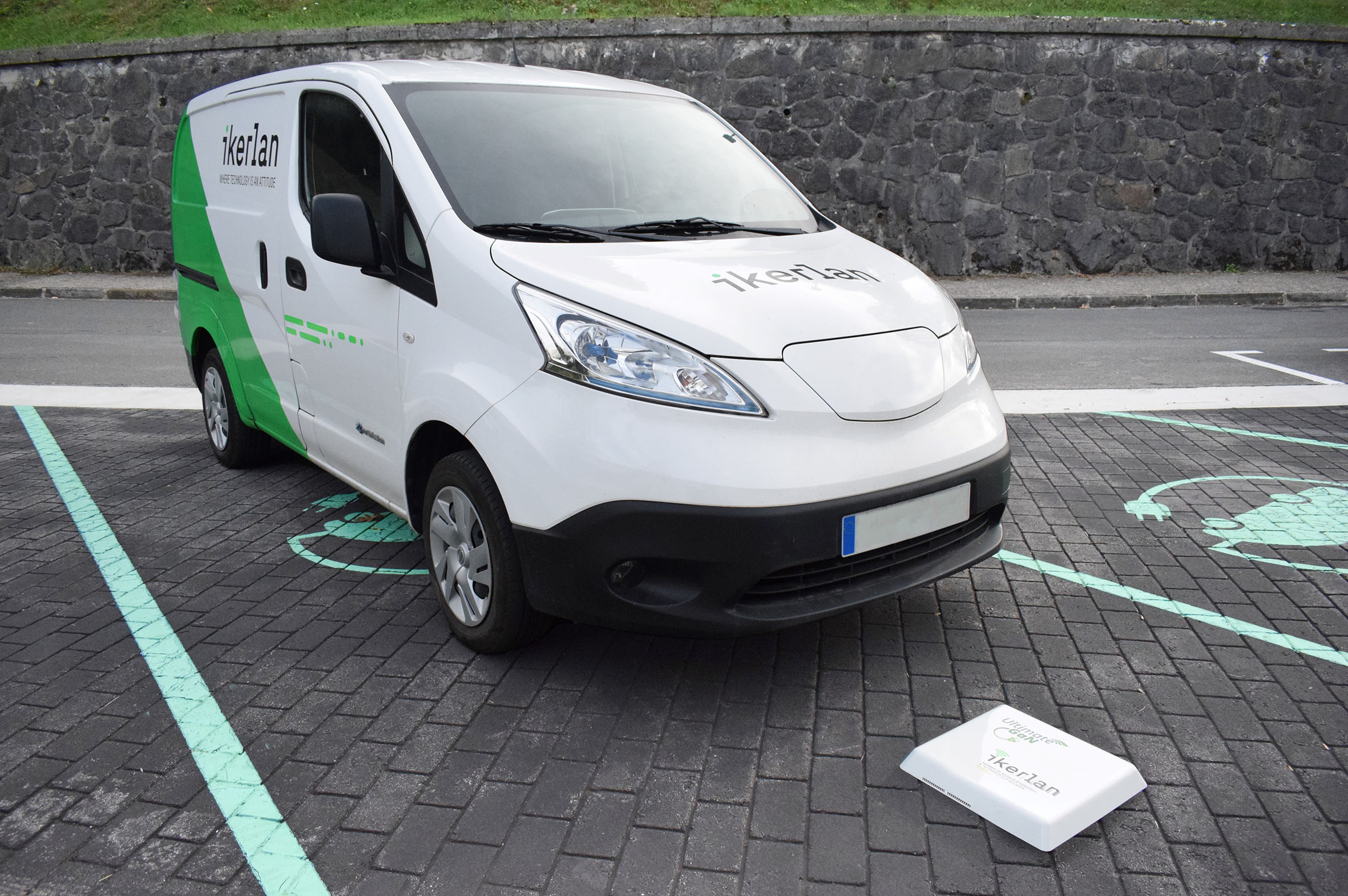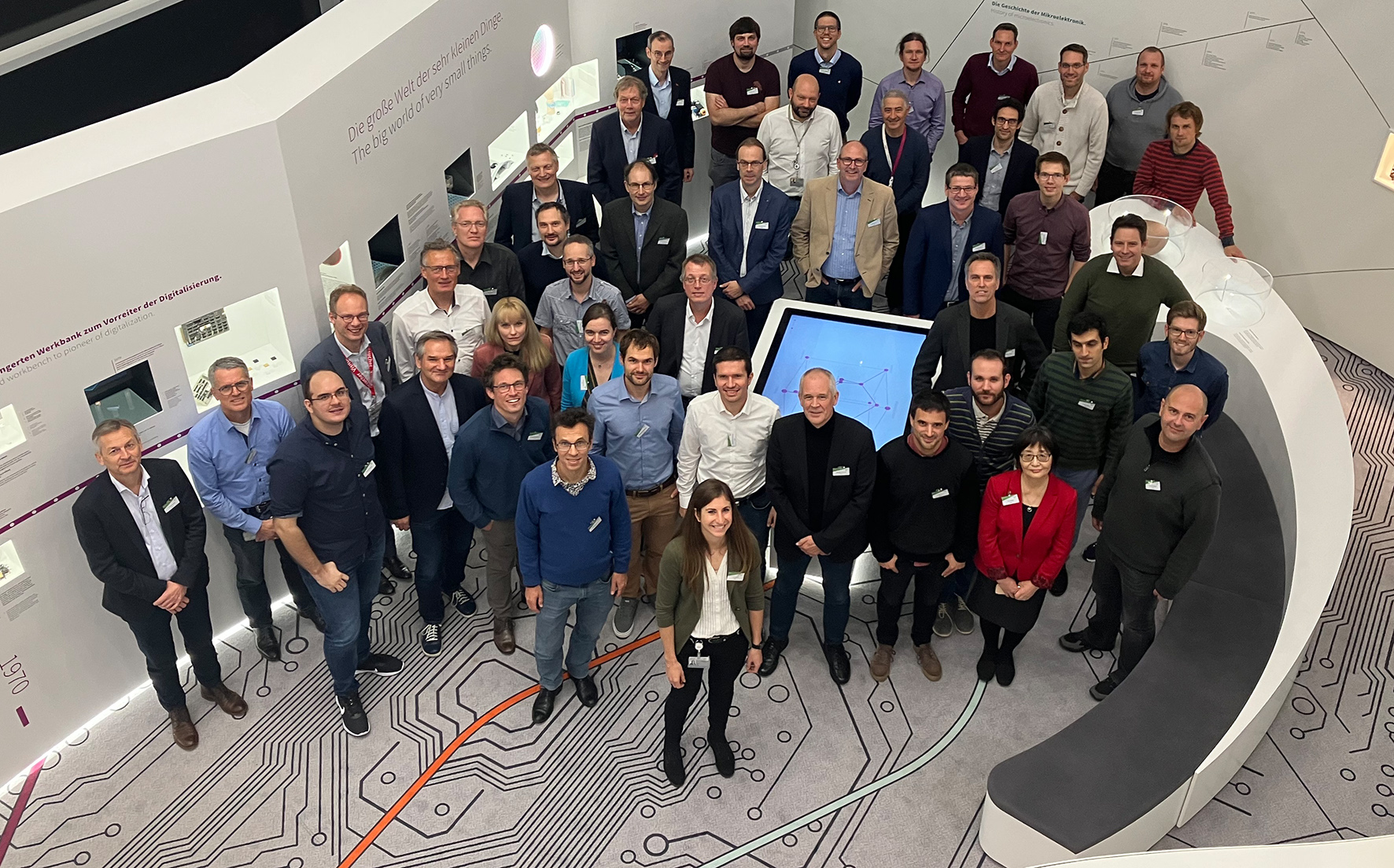EU research: Energy-saving chips made of gallium nitride boost efficiency and CO2 savings
European research team developed compact, low-cost energy-saving chips made of the semiconductor material gallium nitride. This opens up a new dimension of energy efficiency in wireless charging of electric cars, in integrating renewable energies into the power grid and enables a sustainable 5G rollout.


The urgent energy transition, the reduction of CO2 emissions and the rising demand for energy are challenging topics of our time. Efficiency is more important than ever before. Generating, controlling and using energy efficiently is a crucial lever for digitalization and decarbonization. Smart technologies and new semiconductor materials such as gallium nitride (GaN) play a key role here. GaN power semiconductors deliver more power in a small space, save energy and thus minimize the CO2 footprint.
In the “UltimateGaN” research project, a team from science and industry has set itself the task of making the advantages of GaN technology usable for many applications. The results are groundbreaking. Further developments in materials and process technology have made it possible to provide efficient and compact GaN energy-saving chips at globally competitive costs in the future. Many applications can benefit from this - from wireless charging of electric cars to the low-loss, smooth connection of solar energy to the grid and the rapid, cost-effective expansion of 5G networks.
In terms of energy efficiency, for example, the prototype developed for wireless charging of e-cars was able to transmit energy with an efficiency level of 96 percent. By comparison, systems available on the market currently deliver efficiencies of 93 percent at most. A three-percent improvement in energy efficiency offers the potential to achieve a reduction of around 1.7 megatons of CO2 per year by 2030, which is roughly the same amount as emitted by around one million cars with internal combustion engines.
Sabine Herlitschka, CEO of Infineon Technologies Austria AG: “Energy efficiency is one of the world's greatest resources for saving energy and reducing CO2 emissions. Power semiconductors made of gallium nitride are real pacesetters for sustainability. The results show how research from Europe is making a decisive contribution to energy efficiency. Every percentage point counts and is a contribution to the European Green Deal. As a global competence center for new semiconductor materials such as gallium nitride, Infineon coordinated this project and achieved decisive further developments together with its partners. This is the best basis for sustainable innovations 'developed and made in Europe'.”
“UltimateGaN is a flagship research project because it combines the competencies of 26 partners from 9 EU countries and enables improvements in the entire GaN value chain: from research work on the material to process development, design, packaging and system solutions,” explains Herbert Pairitsch, Director Technology & Innovation at Infineon Technologies Austria and overall project manager, adding, “The results from research, development and manufacturing are linked and the entire process becomes more efficient and climate-friendly. This will benefit the partners directly and subsequently many other industries.”
GaN revolutionizes energy use
In semiconductor technology, the raw material GaN, which is a by-product of aluminum production, can unleash its full physical potential. GaN semiconductors are more heat-resistant, produce more power, convert energy much faster and thus have fewer energy losses. The energy savings mean that GaN also benefits the environment, as there are fewer emissions. The benefits are already being seen in LED lights and in power supplies in consumer electronics. Compared with other charging solutions, GaN reduces energy losses here by 21 percent. Research in the “UltimateGaN” project is now making high-performance GaN chips usable for other applications.
Research brings more efficiency in design and process
In the “UltimateGaN” project, high-performance GaN layers were realized on 200-millimeter silicon wafers and tested in various applications. In combination with advanced metallization processes, optimized assembly and interconnection technologies as well as design adaptations, it was possible to improve the overall GaN system structure of the GaN microchip and to further reduce the size. The technological advantages of GaN are combined with process improvements in the manufacturing process.
In a nutshell this means that smaller designs bring smaller housings, less material and resource consumption, better productivity in manufacturing and thus lower production costs. In the end, many applications worldwide benefit from this in order to save energy and minimize the CO2 footprint. Three applications were specifically addressed in the project: smart mobility, smart grid and 5G communication networks.
Smart Mobility: Wireless charging of e-cars
GaN components are particularly useful in efficiency-driven applications such as charging electric cars. If this is also done wirelessly, the ease of use also increases at the same time. The research team developed a bidirectional 3.6-kW battery charger with GaN power converters for this purpose. The prototype achieved an efficiency level of up to 96 percent, clearly surpassing previous efficiencies of 90 to 93 percent. The underlying inductive charging technology also works in snow and ice and is also practical, for example, in places where vehicles are often found, such as supermarket parking or city parking lots.
Smart grid: integration of renewable energies
There is also great potential in energies from the sun and wind and their integration into the power grid. Intelligent power electronics minimize energy conversion losses and get more electricity out, so to speak. To this end, the project implemented a modular GaN conversion concept for the integration of microgrids - i.e. local subgrids consisting of photovoltaics, wind and storage technologies - into the smart grid. More than 3,000 hours of field tests prove that the GaN components offer the best reliability with the highest efficiencies of up to 98.4 percent and thus decisively advance the energy transition.
5G communication: Fast data transfer
Research also lays the foundation for GaN amplifier modules and thus for fast data transfer, for example, for lightning-fast video streaming or communication in the Internet of Things. Since the energy-efficient 5G amplifiers made of GaN are also more cost-effective, a faster, more energy-efficient and climate-friendly 5G-rollout will be possible. The project also won the 2019 Futurezone Award in the 5G category.
The results of “UltimateGaN” show great potential and are of significant societal benefit - for a digital and sustainable future.
EU cutting-edge research: 26 partners from nine countries
The European project “UltimateGaN” (Research for GaN technologies, devices and applications to address the challenges of the future GaN roadmap) ran for a total of three and a half years. The project volume of 48 million euros was financed by investments from industry, grants from the individual participating countries and the ECSEL Joint Undertaking (Electronic Components and Systems for European Leadership). The project partners are:
Austria: Austria Technologie & Systemtechnik AG, Infineon Technologies Austria AG, Fronius International GmbH, SAL Silicon Austria Labs, Graz University of Technology | Belgium: IMEC | Germany: AIXTRON SE, Infineon Technologies AG, Siltronic AG, Max Planck Institute for Iron Research GmbH, Fraunhofer Gesellschaft zur Förderung der angewandten Forschung e.V., Chemnitz University of Technology, NaMLab GmbH | Italy: Università degli studi di Padova, Infineon Technologies Italia, Universita di Milano Bicocca | Norway: Eltek AS | Slovakia: Slovak University of Technology in Bratislava, Nano Design SRO | Switzerland: Ecole Polytechnique Fédérale de Lausanne EPFL, Attolight SA | Spain: IKERLAN, For Optimal Renewable Energy, LEAR | Sweden: RISE Research Institutes of Sweden AB, SweGaN AB
To the press release by Infineon: EU research: Energy-saving chips made of gallium nitride boost efficiency and CO2 savings
The use of the photos is permitted exclusively in connection with this press release and with indication of the copyright.
Last modified:
 Fraunhofer Institute for Applied Solid State Physics IAF
Fraunhofer Institute for Applied Solid State Physics IAF